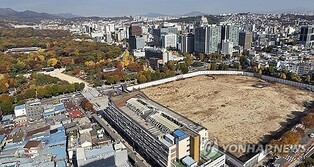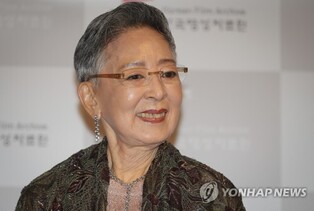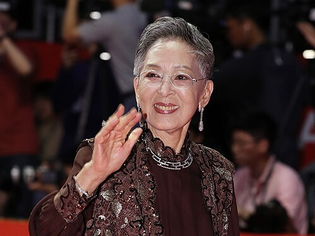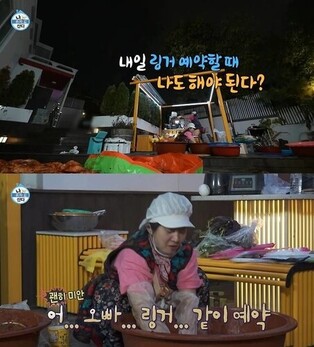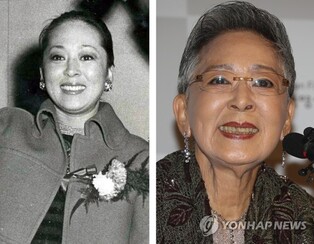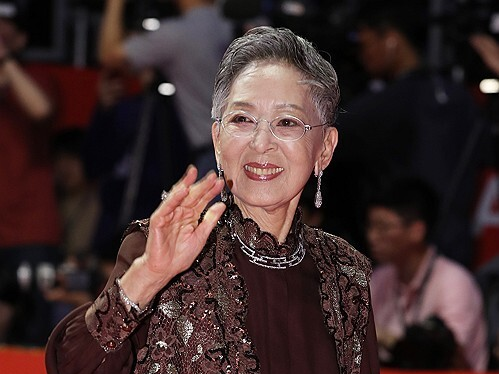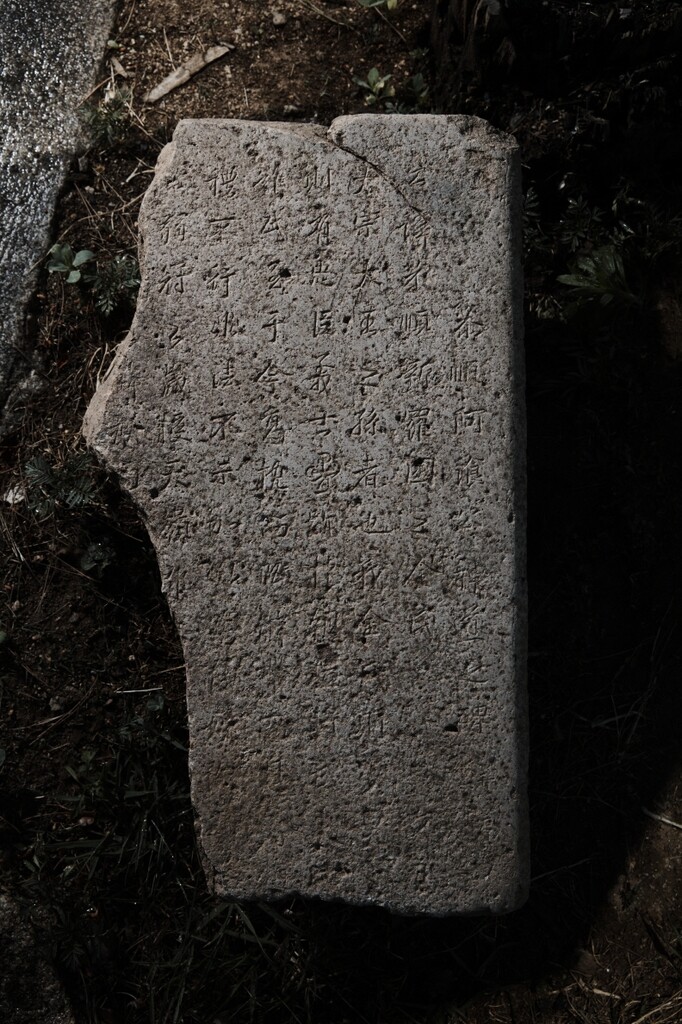 |
| ▲ This photo, provided by professor Park Hong-guk from Uiduk University, shows the Sindobi Stele of Gongsun Achan. (Yonhap) |
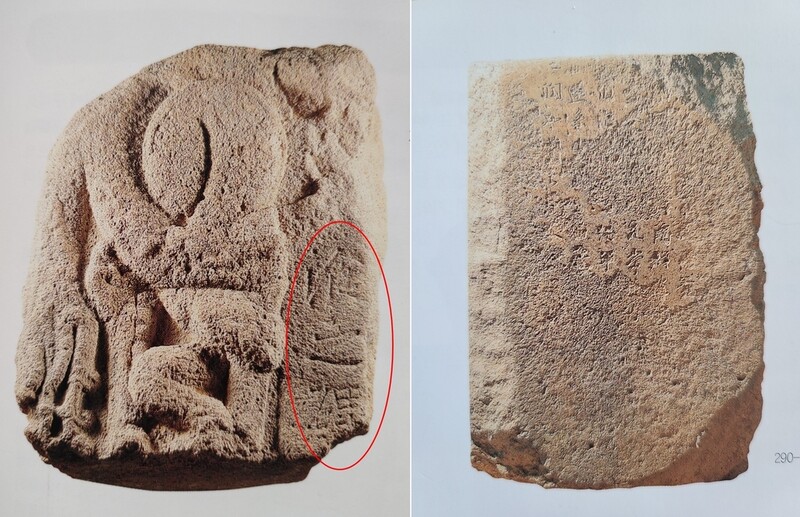 |
| ▲ This photo, provided by professor Park Hong-guk from Uiduk University, shows the writing "Chanjibi" (left) and the fragment of a tombstone (right). (PHOTO NOT FOR SALE) (Yonhap) |
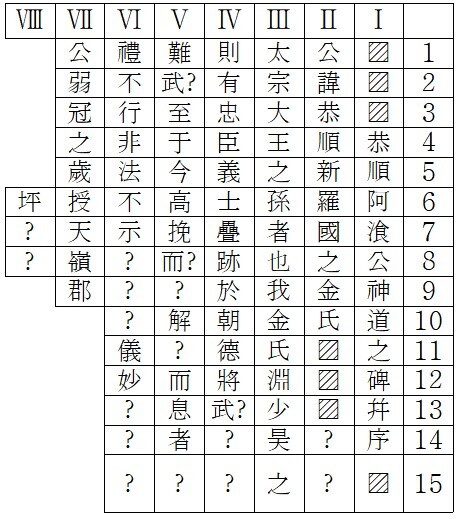 |
| ▲ This photo, provided by professor Park Hong-guk from Uiduk University, shows the analyzing of the letters in the Singobi Stele of Gongsun Achan. (Yonhap) |
 |
| ▲ This photo, provided by professor Park Hong-guk from Uiduk University, shows professor Park Hong-guk investigating the Singobi Stele of Gongsun Achan. (Yonhap) |
 |
| ▲ This photo, provided by professor Park hong-guk from Uiduk University, shows the handwriting of the letters in the Singobi Stele of Gongsun Achan. (Yonhap) |
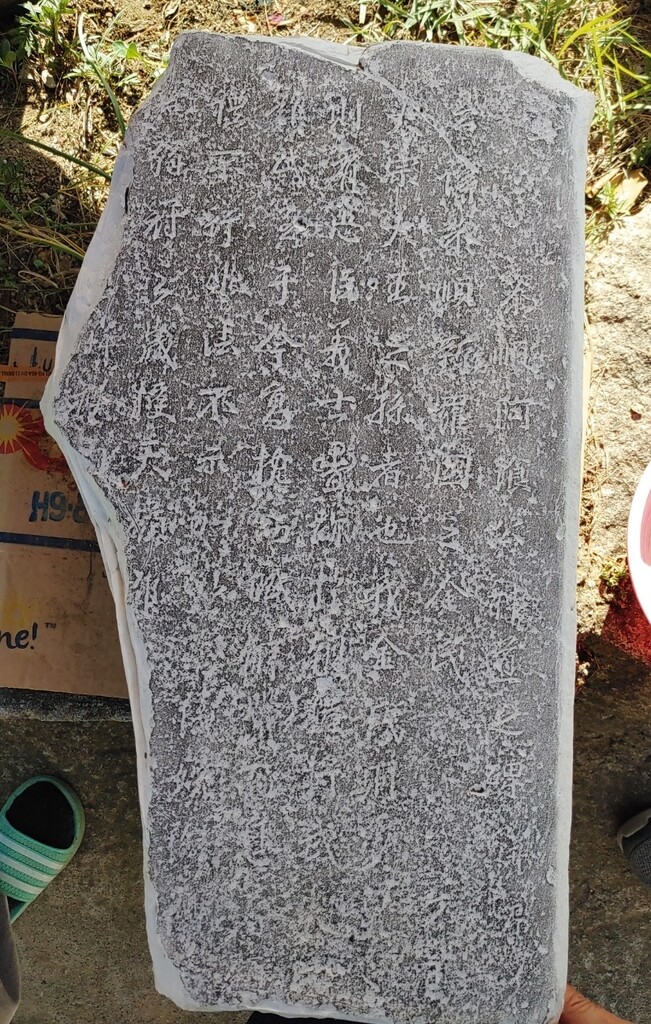 |
| ▲ This photo, provided by professor Park hong-guk from Uiduk University, shows the letters engraved in the Singobi Stele of Gongsun Achan. (Yonhap) |
SEOUL, May 26 (Yonhap) -- A part of Silla Sindobi Stele, believed to the oldest among the identified ones in Korea, was discovered in Gyeongju, North Gyeonsang Province. It has been told that Sindobi Stele, a stele engraved with the deceased's achievements did not exist before the Goryeo Dynasty.
This stele was identified to be the upper right part of "Chanjibi (tombstone housed at the National Museum of Gyeongju with the word 'Chan-Ji-Bi' engraved)" owned by the Gyeongju National Museum. Discovered in November 1963, one fragment of the capstone and two fragments of the stele remain for Chanjibi. The words "Chan-Ji-Bi" are engraved on the capstone.
Park Hong-guk, an archaeological researcher and a professor at Uiduk University, announced on the 26th that he had confirmed that it was the "Sindobi of Gongsun Achan (6th level of office rank)" believed to have been made in the 8th century, by examining the rock in the garden of "Namsansa," a Buddhist temple in Namsan-dong, Gyeongju.
Namsansa Temple is located about 500m south of the existing Chanjibi discovery site. The stele identified was made of granite and measures 21 to 30 cm in width, 56.5 cm in length, and is measured to be 25.6 cm thick.
Based on the size of the capstone in the Gyeongju National Museum, Professor Park estimated that the stele would originally be 70-80 cm wide and 160-180 cm long. Additionally, there is a high possibility that there would have been a tortoise-shaped pedestal that fits the capstone which has been exquisitely made.
About 100 characters, 1.8cm to 2.8cm on just one side of the stele remain. Professor Park, along with Professor Lee Young-ho of Kyungpook National University, who majors in the history of Silla, analyzed 80 inscriptions.
On the far right side of the inscription are the words "Gong-Sun-Ah-Chan-Gong-Sin-Do-Ji-Bi (恭順阿湌公神道之碑)." Professor Park explained that "Gongsun is the name of the stele owner, and 'Achan' is a 6th level of office rank out of the 17 ranks in Silla. With these letters, this tomb was named "GongSunAhChanGongSinDoJiBi."
"Even though the Chanjibi in the Gyeongju National Museum is an important inscription on a stone monument, as the meaning of the inscriptions are rather simple, there were no papers written about it," said professor Park. "I was able to understand at least a little of it by Chanjibi and its material, along with the same script style found on the new relic."
Professor Park selected "Cheonryeonggun" in line 7 as a clue to the time of making the stele. Cheonryeong-gun is the old name of Hamyang, Gyeongnam, and has been used since 757.
"As this is the first case where the word Cheonryeonggun was confirmed as an inscription on a stone monument, we can know that the stele has been made after the year 757," he continued. "When we compare the capstone of other silla steles like the stele of King Muyeol, Gyeongju or other steles that were made around the year 800 like the Stele for the Construction of Amitabha Buddha at Mujangsa Temple Site, Gyeongju, it is presumed to have been made before that."
He further emphasized, "The oldest identified Sindobi stele was that of King Taejo's Geonwonneung tomb, and so was very surprised that Silla Sindobi stele was found."
Professor Lee said that there are many phrases in the inscription where "SillaGukji Kim Clan (新羅國之金氏)" is referred to "Kim Clan of Silla Kingdom" and where "Agimssi (我金氏)" is reffered to "Our Kim Clan." He also paid attention to the phrase "Taejongdaewangjisonja (太宗大王之孫者)" which is interpreted as "Shaohao," the son of the Yellow Emperor and "The grandson of King Taejong of Joseon."
"We could not find a person named Gong-sun in any of the history books," Professor Lee explained. "It is not clear whether Gong-sun is the grandson of King Taejong Muyeol or if Gongsun's father or grandfather is the grandson of King Taejong Muyeol."
"From the passages related to the Kim clan, one will be able to get a glimpse of the self-esteem and pride of the Kim clan," he continued. "Although Achan is the best crown that the members of the yukdupum class (head rank six) of Silla could get, considering that it has an enourmous Sindobi Stele, it is highly likely that Gongsun was related to the royals."
The inscriptions were all written in the regular script (standard script), cursive script, and in the semi-cursive script (running script) which is right between the regular script and the cursive script. The most used script style was the semi-cursive script.
Professor Park also emphasized that although the script style of the stele is similar to the writings of Wand Xizhi, a famous Chinese calligrapher, it was written by Kim Saeng, a calligrapher who had high reputation during the Silla dynasty.
"One could feel a strange dignity from the power of the brush stroke, the humour, and the freedom from his handwriting," he continued. "There were a lot of similar letters from the Stele for Buddhist Monk Nanggong at Taejasa Temple, Bonghwa, which is known to have been made by gathering the words of Kim Saeng."
"This stele is so artistic that the same characters were written differently on purpose," he added. "It is very rare to find script styles of all regular script, cursive script and semi-cursive script in a stele that was made before the 8th century."
On the 20th, monk Seon-oh from Namsansa found a faint text while cleaning up a rock and requested professor Park to read and examine it. After hearing the explanation of the stele from Professor Park, on the 25th, monk Seon-oh reported the discovery of a buried cultural property to Gyeongju city for its preservation.
(This article is translated from Korean to english by Haemin Kim.)
(END)
(C) Yonhap News Agency. All Rights Reserved


















